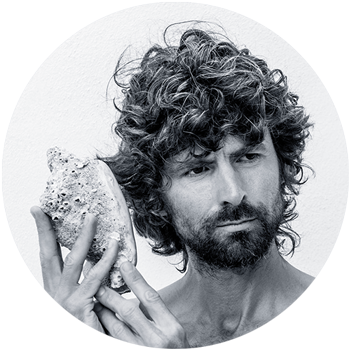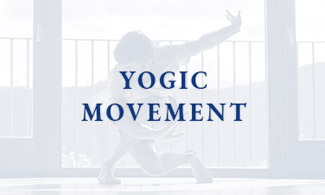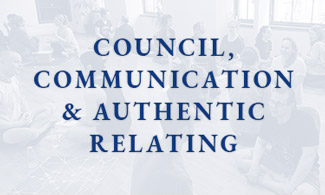
Fighting Monkey Reflection – 2021 Zero and Wholeness Injury and Health
I had been interested in Fighting Monkey for several years. 2020, with all my in-person work cancelled, I was able to join their summer intensive. This year, I returned to Ancient Olympia, looking forward to another week immersed in the Fighting Monkey method.
Now, speaking of the ‘Fighting Monkey method’, I must make clear that I am in no way an official representative of Fighting Monkey (FM). Also, as I understand it from its founders/principal teachers Jozef and Linda – its ‘monsters’ in their words – FM is a method that by design is not fixed, but is intended to help us be more real-world-adaptable. I have heard Jozef emphasise more than once how humans are not machines, and that a good human practice, whatever outer forms it takes, needs to be responsive and adaptable. This accords with my own conviction that practice has to acknowledge and work with the dynamic complexity of natural life. This natural life that includes of course ageing and death. I once heard a beautiful description of the FM method from FM teacher Elke Schroeder, I prapraphrase from memory: ‘I think of it as a method for longevity with virtuosity.’ It’s a method to cultivate growing old gracefully in the sense that it can help us keep celebrating life, however long we are blessed to be here. As Jozef has said, ‘being in love with life, more and more, this is health.’
As with much of the other movement work I have explored I ‘read’ FM through the ‘yogic lens’ that I have come to see the world through. I see it in the context of whole life yoga practice: cultivating harmony, resilience, robust responsiveness, equivision, equipoise in the dynamic field of life; deepening practical, embodied understanding of ourselves and broader life; working with the reality of human nature; honouring the pulsations/cycles of life and cooperating with the nature we are.
One of the constituent elements of FM practice is Zero Forms. There is a lot one could say about this. Again, let me make clear, this is my take on it from my experience of it. Others, especially those who have worked with the FM method in a much more immersive and long-term extended way might have very different things to say. Anyway, amongst what I understand about it: zero forms is a part of practice that allows us to tune in to where we are now. Moving the body in a fairly measured, often (though by no means exclusively) slow, always attentive way, allows a practitioner to check in with the anatomy and physiology. Zero Forms often involves moving the spine and the joints, observing the quality of flow and connectivity through the energy ‘corridors’ of the body. It is a great example of what is sometimes referred to as ‘stacking’: doing many things at once but not multi-tasking. It is a focused practice, yet it aims simultaneously in multiple directions. It brings a broad spectrum of nutrients into the system all at once.
It tonifies the organs, it cultivates concentration, multi-sense observation and integrated awareness, it begins to invite fluid, rhythmic coordination between different layers of the body’s intelligence and constituent powers; it stimulates the immune system, and depending on how one works with the movement, it can be used to ground, to quieten, to stimulate, to energise, to strengthen, to cleanse and so on. In other words, while some of the outer forms and some of the subtle aspects of the discipline are different, zero forms has a good deal in common with my morning ‘yogic movement practice’ of the last ten-fifteen years. I draw on lots of different modalities: from the realm of ‘classic modern yogāsana’, from things I learnt playing and training for sports, things I have learnt from various teachers over now more or less forty years of daily movement practice. In the last decade or so, people encountering the way I work with movement are sometimes surprised, puzzled, excited, inspired, and sometimes disappointed! ‘Is this yoga?’ ‘Er, is this tai chi?’ ‘Mmm, is this some kind of dance?’ ‘What style of yoga is this?’ ‘Where can I find this type of yoga if I’m not practising with you?’
When I give myself to yogic movement practices in the morning I am doing my best – which is often so far from what I aspire to – to cultivate steadiness and harmony, to set myself up to navigate the day a little more skilfully and joyfully. So the outer form of what I do can be very different day to day, week to week, and may vary considerably depending what environment or climate I am in, what other types of movement or exertion I am likely to experience that day or during that period, and more basically how I am feeling/doing/experiencing.
When facilitating movement practices, I share what I feel is appropriate then and there, depending for example on the setting, the context, the time available and who is in the group.
However, whether in personal practice or facilitating group exploration, I might say that I am aiming towards the ‘zero state’. What do I mean? To answer this I am going to refer first to something that has landed with me from this year’s FM intensive experience, and then share below a section of the notes from a course I gave earlier this year on Indian Mythology.
This year, my experience of Fighting Monkey was somewhat different from what I had been anticipating. I returned motivated to immerse myself in the embodied, active, participative learning experience. Though challenging, I had found the work, especially in the realm of rhythm and coordination deeply valuable, and with the various restrictions over the last months, I had not accessed any of this type of work in person since the previous intensive. So I booked my place, and traveled to Olympia looking forwards to working in a group and to inhabiting the empty vessel, blank slate, receptive state of studentship as fully embodied as I could.
However, before Linda even demonstrated the first steps of the week’s coordinations on the first morning, I injured my left knee, quite badly. The how, why and what of that is a whole other reflection, but suffice to say, I was not thereafter able to participate in so much of the physical practices. Nonetheless, I attended everything and continued to practice zero forms in the morning within the limits the injury described. One afternoon though, feeling the need to buoy the damaged joint in the water, I left the session early.
Later that evening, another man on the course told me how Jozef had ‘been talking about me’ in what he thought was ‘quite a nice way, when speaking about the thinking behind zero forms. I didn’t see you there, but I thought I should tell you.’ From what was relayed to me, I understand Jozef said something like:
‘Zero is different every day. What is my zero now? Look, if James comes to zero forms expecting his knee to be as it was before Monday, he is destroyed, desolate, but he comes and works where he is, where he can.’
What I understood reflecting on this, is that if I show up as ‘zero’ as I can, I give myself the opportunity to experience as fully as possible.
I did not have the FM experience I had anticipated, but I still had a great time, it was still a positive, nourishing, instructive experience.
Zero and whole, fullness and emptiness.
Are these really such opposites?
Perhaps we can see them as different ways of expressing or allowing the same totality of experience.
But do I allow myself a total experience?
Or do I confine myself in partiality?
Do I cling to ideas or thought forms that block my total presence in the here and now?
Do I hark back to previous ‘golden times’, or fixate on some imagined future state and so basically rob myself of the chance to experience fulfilment in the only moment I can ever experience anything which is now?
But letting myself be zero, letting myself be present, this is not always so easy. Which is why Fighting Monkey is a practice. Which is why yoga is a whole life, lifelong practice.
Yoga is a practice that invites us to work with the whole cycle, the full spectrum of experience.
And the full spectrum of experience includes death, the only certainty in life.
Reflecting further on the zero, I wondered, what will happen if I do not practice the zero regularly?
Will I be more likely to clog myself up with unhelpful thought forms and restricting patterns that hinder my living authentically fully?
If I do not practice zero, what happens when things get taken away ‘unexpectedly’?
The crowning achievement of lifelong yoga practice is sometimes said to be the capacity to die in peace, in fulfilment, at ease, in a state of at-one-ment, devoid of rancour or regret.
If I do practice the zero, surely I will be able to meet death and the inevitable losses of life that little bit more easily.

James Boag | Whole Life Yoga
The yoga of the whole human being. Practical philosophy, storytelling, movement, inquiry, looking in ways that reach beyond our habitual ways of looking.
Listen to James’ unique whole life yoga perspectives on the WHOLE LIFE YOGA podcast.











